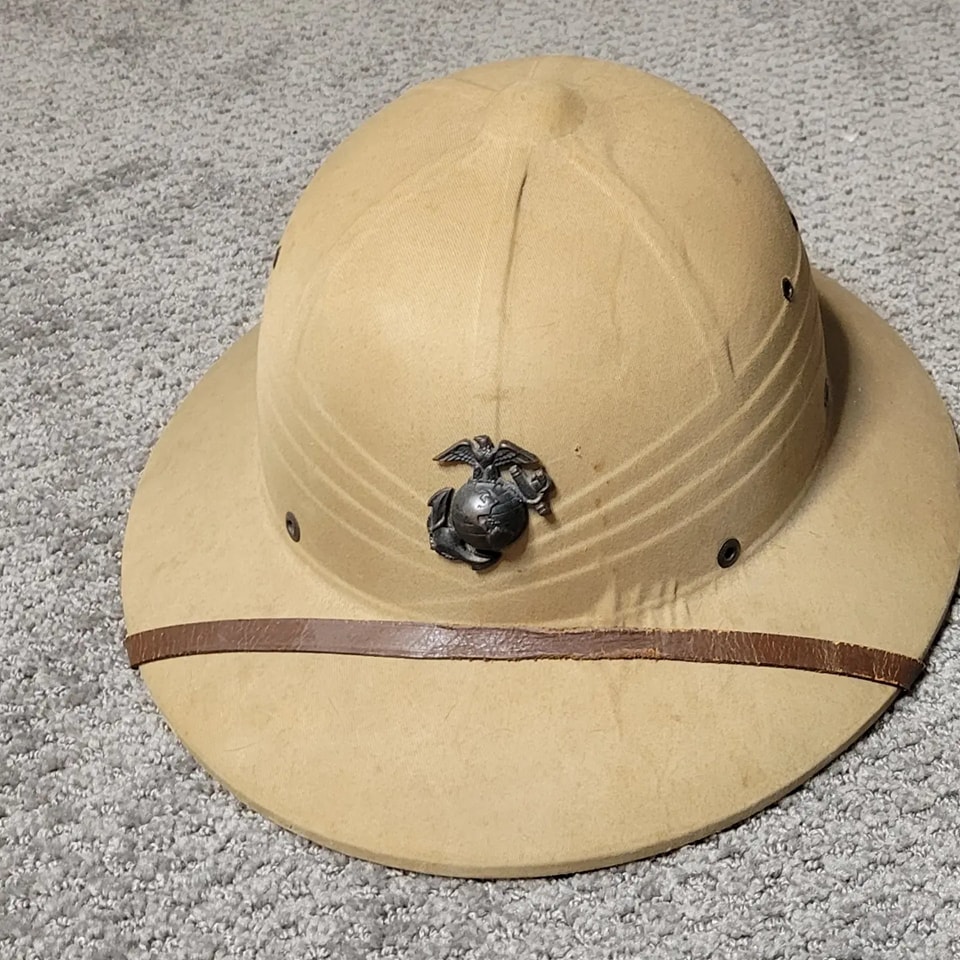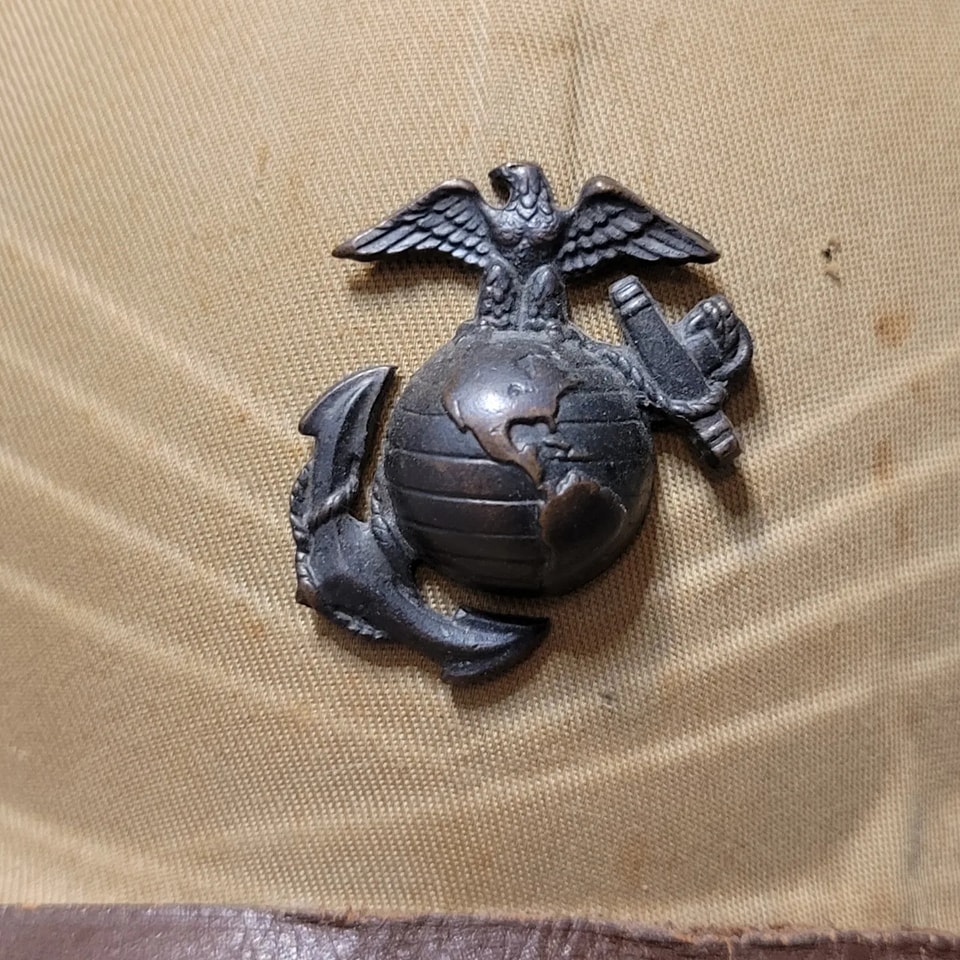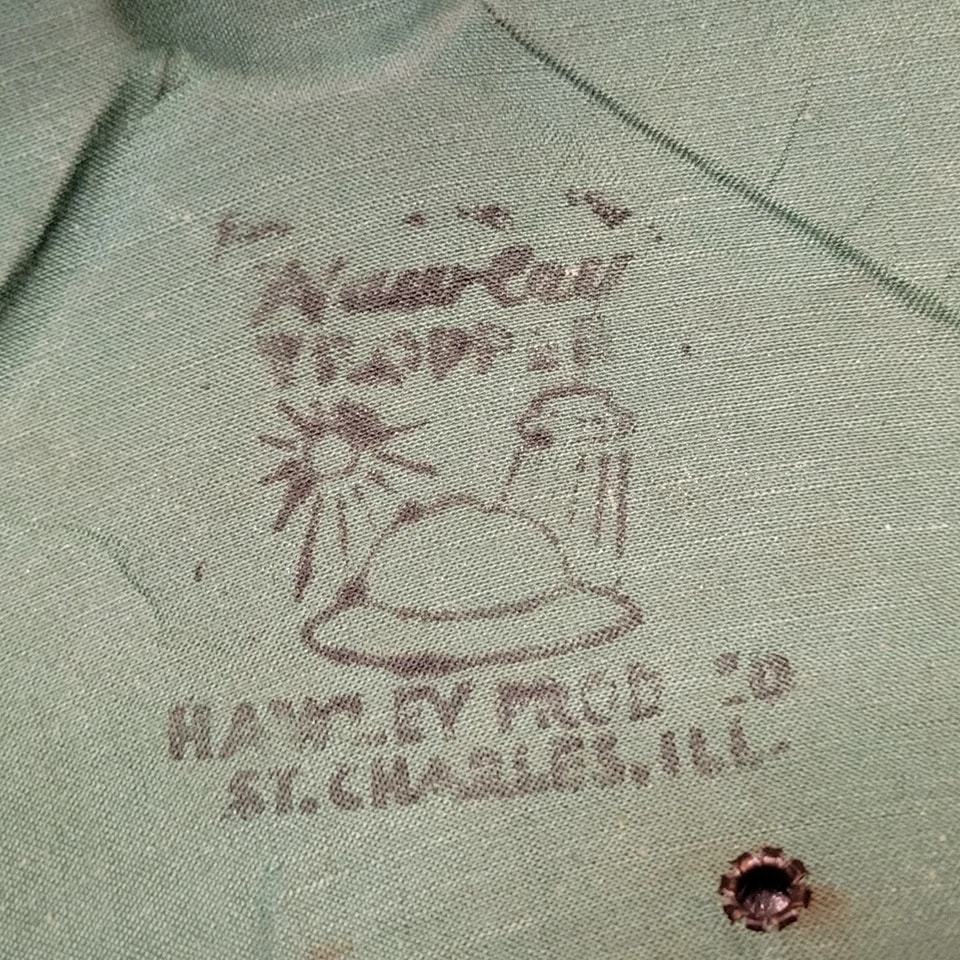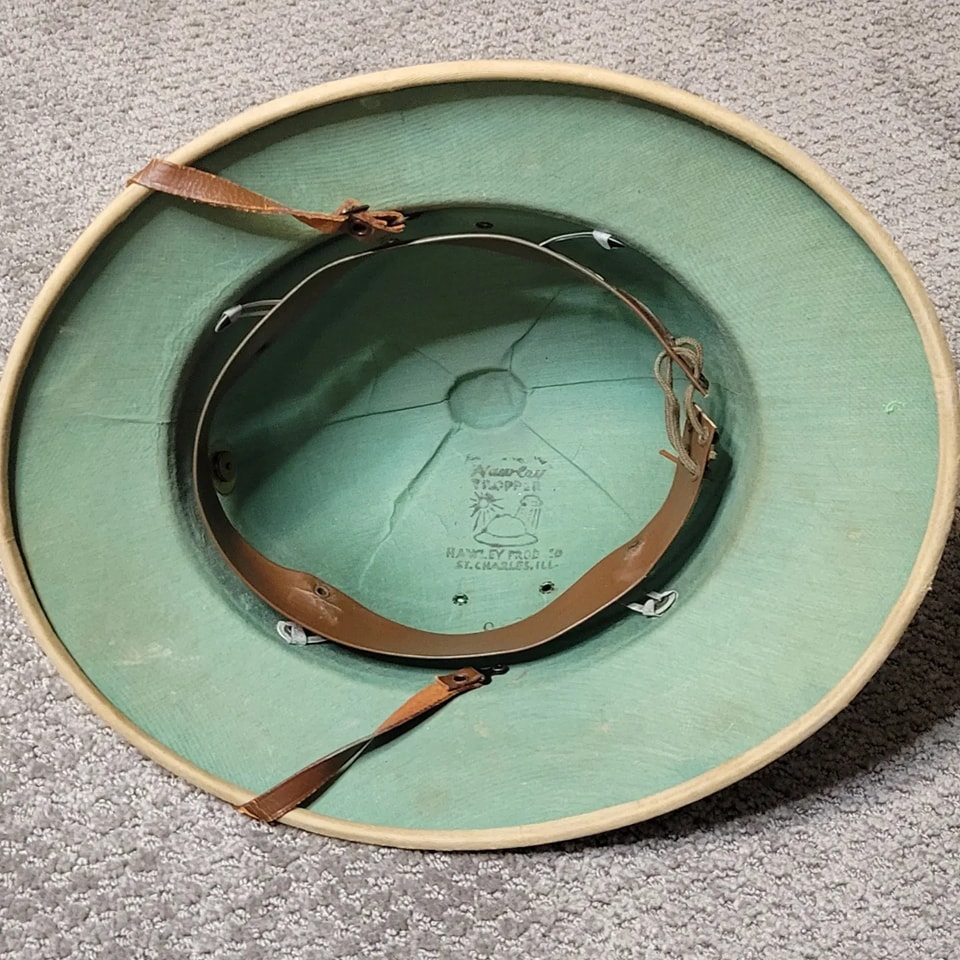USMC Pith Helmet
The U.S. Marine Corps (USMC) fiber pith helmet, commonly referred to as the “Hawley Pith Helmet,” has a notable history dating back to the early 20th century. It was primarily used during the interwar period, in tropical and desert climates, and in formal or ceremonial settings. Here’s a detailed history of this iconic piece of headgear:

Early Development and Purpose
The USMC, like many other military organizations operating in hot and humid climates, recognized the need for head protection that could shield its soldiers from intense sun and heat. This need led to the adoption of pith helmets, which were designed to be lightweight and well-ventilated, making them suitable for tropical and desert environments.
Hawley Products Company
The Hawley Products Company, a manufacturer based in St. Charles, Illinois, was a key player in the development of the USMC fiber pith helmet. In 1934, Hawley patented a method of making helmets using a fiber material that was both durable and lightweight. These helmets were molded from layers of pressed fiber (a cellulose-based material), which made them more affordable and easier to produce compared to earlier pith helmets made from actual pith or cork.
Hawley produced helmets not just for the USMC but also for other branches of the U.S. military, as well as civilian organizations. The fiber helmet made by Hawley for the Marines was similar in appearance to the traditional pith helmet but offered better durability while maintaining the needed light weight.

World War II Use
The Hawley pith helmet became widely used by Marines during the pre-World War II era and early stages of the war, particularly in training environments and in tropical deployments, such as in the Pacific theater. Though not used extensively in combat, the helmet was favored for its practicality in non-combat, tropical settings where sun exposure was a major concern. Marines would use these helmets while performing duties like guard duty, parades, and other administrative tasks.
However, as the war progressed and combat conditions became more intense, the helmet was gradually replaced by more protective gear, like the M1 steel helmet, which provided better protection against shrapnel and bullets.
Design Features
The Hawley USMC pith helmet had several distinguishing features:
- Material: The helmet was made from compressed fiberboard, which was lightweight and offered protection from the sun.
- Shape: It had a wide brim that provided extensive sun protection. The crown was designed to allow airflow and keep the head cool.
- Liner: The inside was typically fitted with a simple suspension system to make it comfortable for long periods of wear.
- Color: The helmet was typically khaki or green in color, allowing it to blend into tropical and desert environments.
- Eagle, Globe, and Anchor Insignia: Most Marine pith helmets featured the Marine Corps’ eagle, globe, and anchor insignia prominently on the front, making them easily identifiable.

Post-WWII and Ceremonial Use
After World War II, the practical need for the Hawley fiber pith helmet diminished as more modern forms of sun protection and combat helmets became standard. However, the helmet continued to be used in ceremonial and parade settings due to its iconic appearance and association with the Marine Corps.
Even today, some units within the Marine Corps still use the fiber pith helmet in formal and ceremonial contexts, preserving its historical legacy.

Legacy
The USMC fiber pith helmet remains a symbol of the Corps’ presence in tropical regions and is a recognizable part of Marine Corps history. The design pioneered by the Hawley Products Company contributed to military headgear innovation, and the helmet itself has become a collectible piece for military enthusiasts and historians.